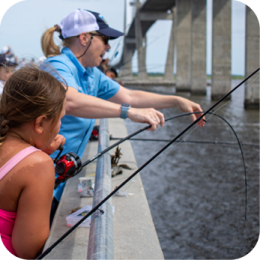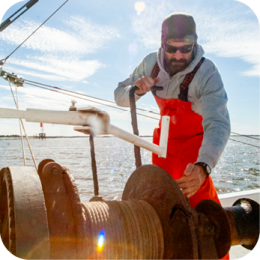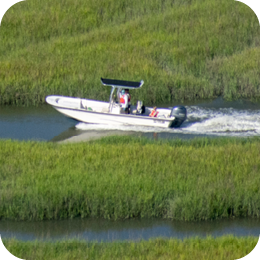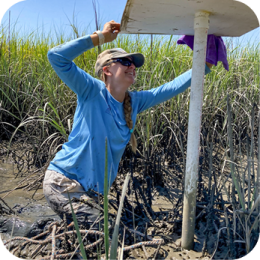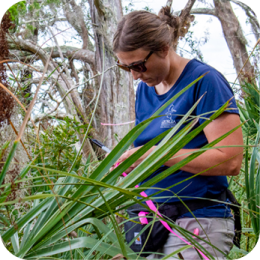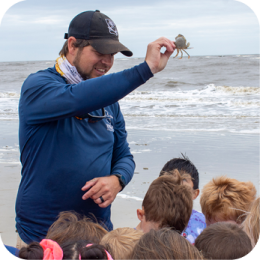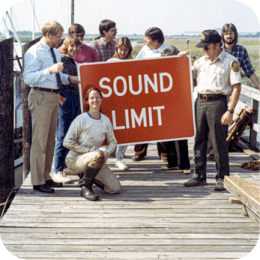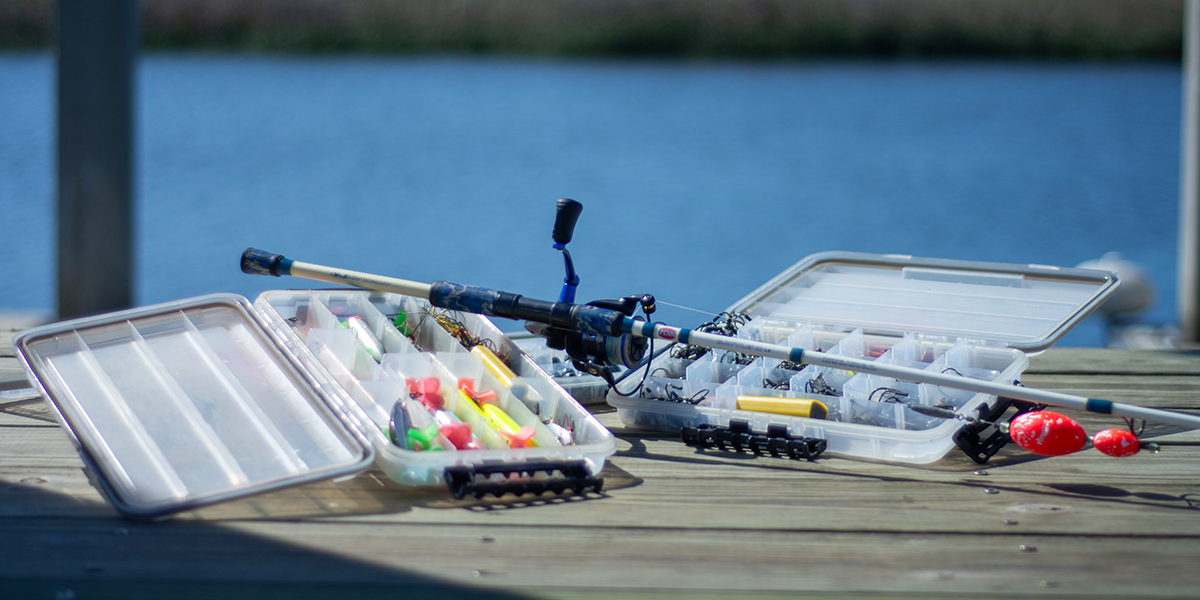
Ask a CRD Pro: What to keep in your Summer tackle box
Knowing what to pack beforehand, straight from the pros.
Posted April 29, 2025
Coastlines Georgia | April 2025 | Vol. 8, Iss. 1
By Tyler Jones, Public Information Officer
and Eddie Leonard, Marine Technician
When the summer sun shines on Georgia’s barrier islands and salt marshes, anglers head to the coast for red drum, spotted seatrout, flounder, and more. But before you cast a line, it pays to know what to pack. We sat down with Eddie Leonard, a marine biologist with the Georgia Department of Natural Resources’ Coastal Resources Division, to get his advice on what every saltwater angler should keep in their tackle box during the summer months.
Eddie, what’s the first thing you’d tell someone about prepping a tackle box for summer fishing on Georgia’s coast?
Start simple, but be prepared. Georgia’s coastal waters are diverse—estuaries, tidal creeks, piers, jetties, surf—you could be fishing multiple habitats in one day. So versatility is key. Make sure your tackle box is organized and waterproof if possible. Heat and saltwater can do a number on your gear, so keep things clean and dry. You’ll also want a variety of floats and weights to go up against the strong tides we have in Georgia.
What are your go-to hooks and rigs?
For most inshore species like spotted seatrout and red drum, I recommend circle hooks in the 2/0 to 4/0 range. They’re great for catch-and-release because they tend to hook the fish in the corner of the mouth, which reduces injury. For bottom fishing, especially if you’re after flounder or whiting, a basic Carolina rig or drop-shot rig with a 1- to 2-ounce weight works well. And always carry some swivels and leader line—you’ll need them if toothy critters like bluefish are around.
What about artificial lures versus live bait?
I like a mix of both. Soft plastics, like paddle tails or shrimp imitations in natural colors, work great on a jig head. Topwater plugs are fun in the early morning—nothing beats watching a trout explode on a surface lure! But live bait—especially shrimp or mud minnows—is hard to beat in the summer. Keep a few bait hooks and a small cast net handy, and you can often catch your own right from the shore.
Are there any summer-specific items you keep on hand?
Definitely. I always pack extra sunscreen, insect repellent (trust me, the no-see-ums are brutal), and a small towel to wipe off sweat or slime. Also, a pair of polarized sunglasses is essential—not only for your eyes but for spotting fish and underwater structure. A major thing you don’t want to forget is extra drinking water. It gets hot out there, and you want to probably take more than you think you’ll need.
Any tools or gear that often get overlooked?
A good pair of pliers or a multi-tool is invaluable—for removing hooks, cutting line, or crimping weights. I also keep a small hook sharpener, especially when using heavier gear around oyster beds. A measuring device is a must—we have size and bag limits for many species in Georgia. CRD offers free decal rules for measuring fish, and they fit great on your cooler or boat. You can learn how to get one by going to CoastalGaDNR.org/CoastalThingsToKnow/EducationalItems.
What kind of line do you recommend?
That depends on the situation. For most inshore fishing, I prefer braided line with a fluorocarbon leader. Braided line has great sensitivity and strength, which is helpful when casting into current or near structure. The fluorocarbon leader is more abrasion-resistant and less visible to fish. Just remember to check for frays often, especially after hooking a fish or rubbing against oyster shells.
Do you carry any safety or first-aid items?
Always. A basic first-aid kit with antiseptic wipes, bandages, and tweezers can be a lifesaver, especially for minor cuts from hooks or fish spines. I also carry a whistle, a small flashlight, and a phone in a waterproof pouch. If you’re wading or fishing from a kayak, these can be crucial in an emergency. Don’t forget your personal floatation device (lifejacket) if you’re on a boat, as well as a fire extinguisher and flare. You also need a throwable flotation device, and a sound-producing device like a whistle or airhorn. These items are required by the U.S. Coast Guard, and DNR Law Enforcement. You can visit BoatUS.org/Equipment for specifics based on the size of your boat.
What advice do you have for new anglers?
Don’t feel like you have to buy everything at once. Start with a few basics—hooks, weights, a couple of lures, and pliers. Focus on learning your local waters and the fish that live there. Watch the tides, ask questions at local bait shops, and don’t be afraid to experiment. Every trip is a learning opportunity.
Any tips for keeping bait fresh in the summer heat?
Heat can be brutal on live bait. If you’re using shrimp or minnows, a bait bucket with an aerator or insulated cooler helps. Change the water often, and keep the bucket shaded. For frozen bait like squid or cut mullet, pack it in a small soft cooler with ice packs and only pull out what you need for the next few casts.
Last question—any tips for being a responsible angler?
Absolutely. Keep barotrauma gear on hand if you’re fishing in deeper water—descending devices or venting tools help fish survive after release. Crush your barbs if you plan to release most of your catch. And bring a small trash bag to pack out any fishing line, bait containers, or snack wrappers. Respecting the resource ensures it’ll be there for generations of anglers to come.
Final Thought:
Whether you’re a first-time angler or a seasoned coastal fisherman, what you bring with you matters—both for your success and for the health of Georgia’s marine ecosystems. So pack smart, fish responsibly, and enjoy the incredible variety our coast has to offer.
